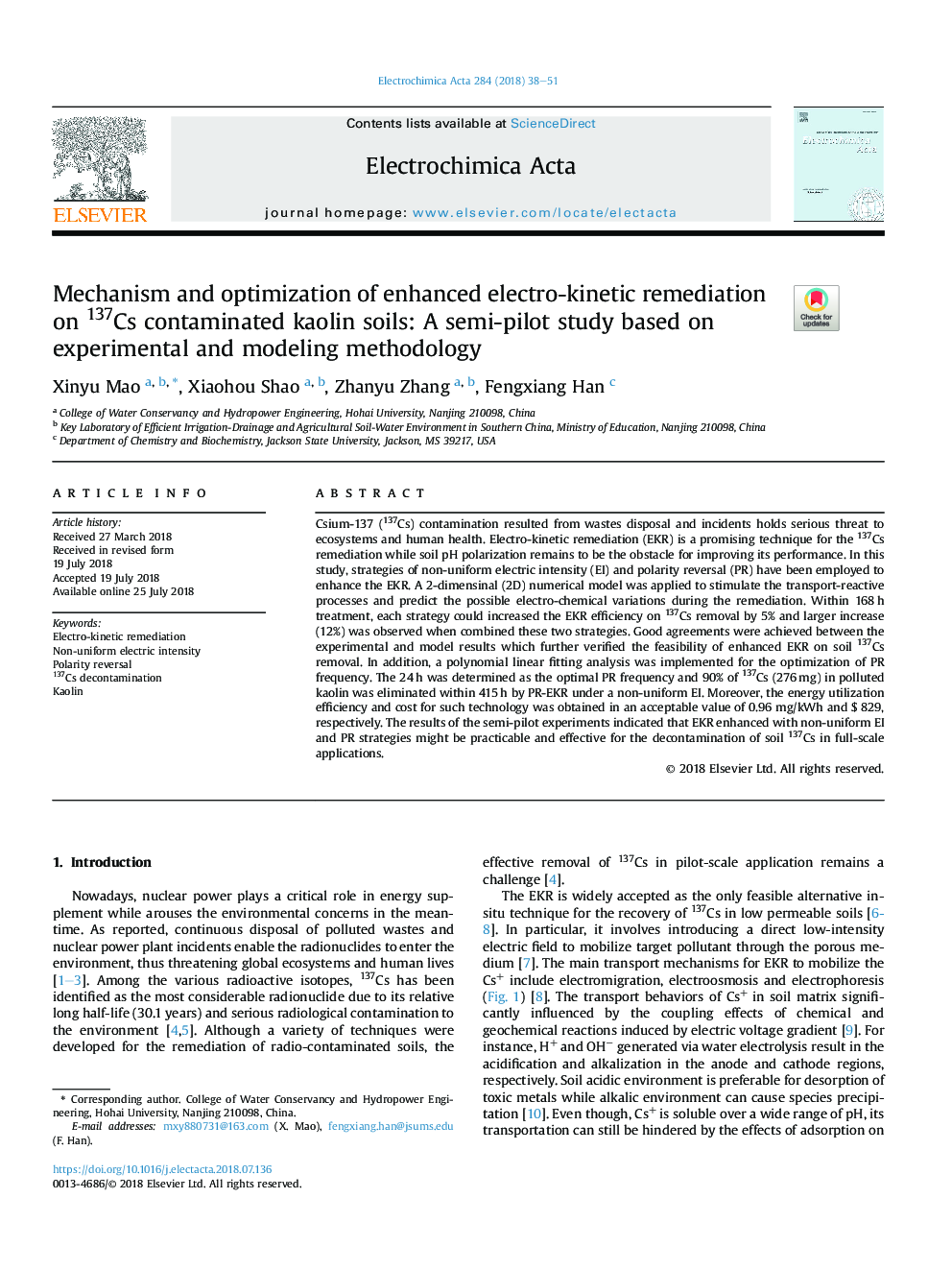| Article ID | Journal | Published Year | Pages | File Type |
|---|---|---|---|---|
| 6601852 | Electrochimica Acta | 2018 | 14 Pages |
Abstract
Csium-137 (137Cs) contamination resulted from wastes disposal and incidents holds serious threat to ecosystems and human health. Electro-kinetic remediation (EKR) is a promising technique for the 137Cs remediation while soil pH polarization remains to be the obstacle for improving its performance. In this study, strategies of non-uniform electric intensity (EI) and polarity reversal (PR) have been employed to enhance the EKR. A 2-dimensinal (2D) numerical model was applied to stimulate the transport-reactive processes and predict the possible electro-chemical variations during the remediation. Within 168â¯h treatment, each strategy could increased the EKR efficiency on 137Cs removal by 5% and larger increase (12%) was observed when combined these two strategies. Good agreements were achieved between the experimental and model results which further verified the feasibility of enhanced EKR on soil 137Cs removal. In addition, a polynomial linear fitting analysis was implemented for the optimization of PR frequency. The 24â¯h was determined as the optimal PR frequency and 90% of 137Cs (276â¯mg) in polluted kaolin was eliminated within 415â¯h by PR-EKR under a non-uniform EI. Moreover, the energy utilization efficiency and cost for such technology was obtained in an acceptable value of 0.96 mg/kWh and $ 829, respectively. The results of the semi-pilot experiments indicated that EKR enhanced with non-uniform EI and PR strategies might be practicable and effective for the decontamination of soil 137Cs in full-scale applications.
Keywords
Related Topics
Physical Sciences and Engineering
Chemical Engineering
Chemical Engineering (General)
Authors
Xinyu Mao, Xiaohou Shao, Zhanyu Zhang, Fengxiang Han,
